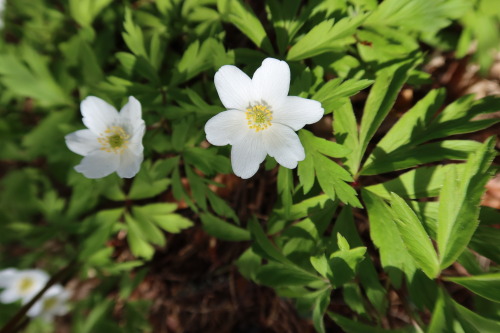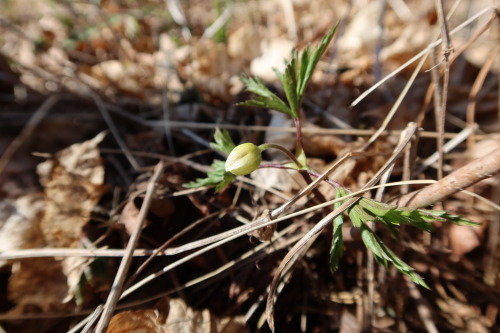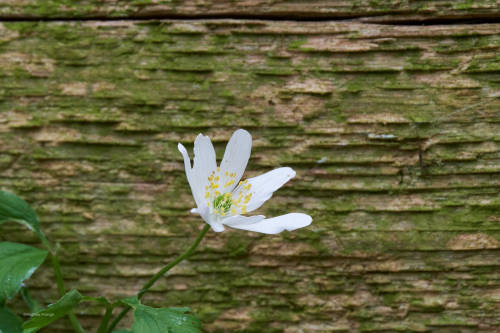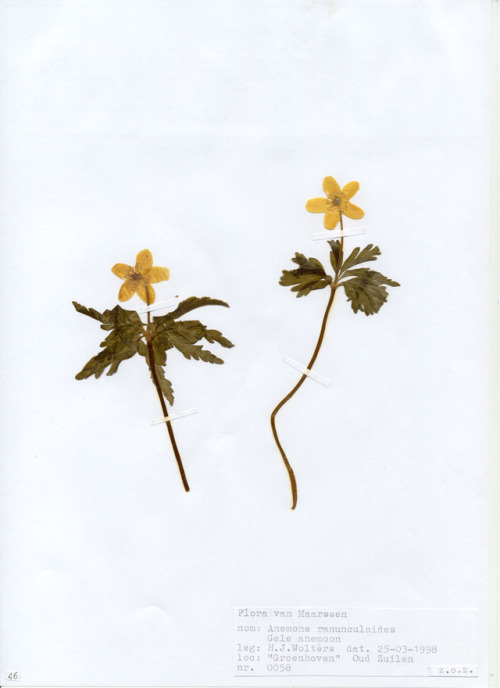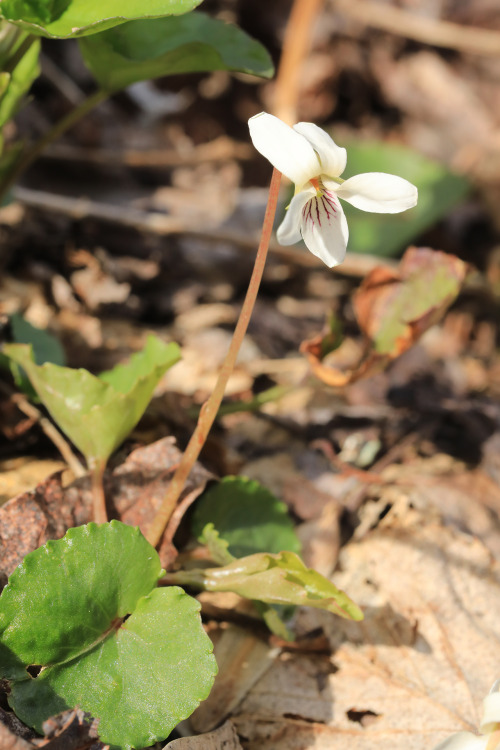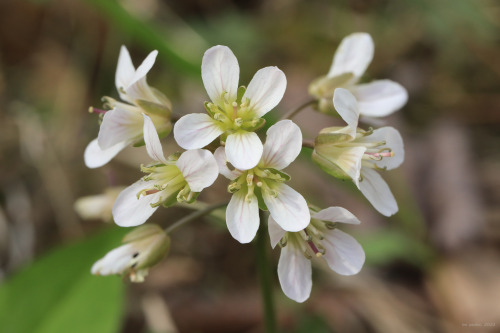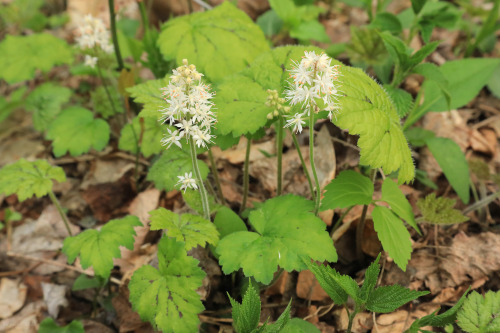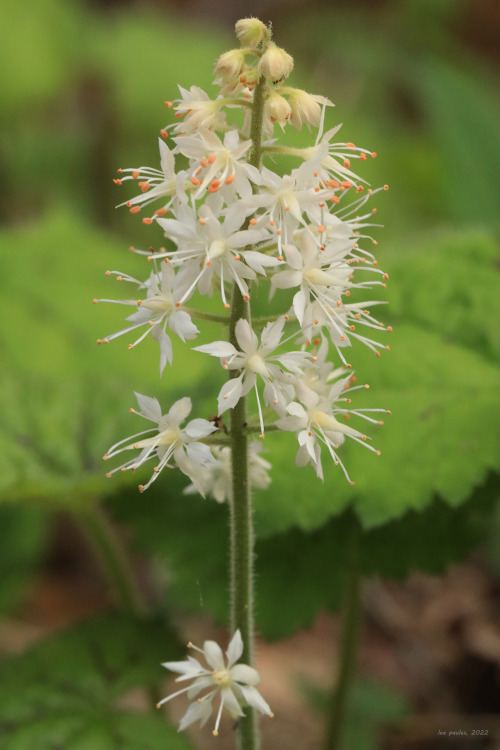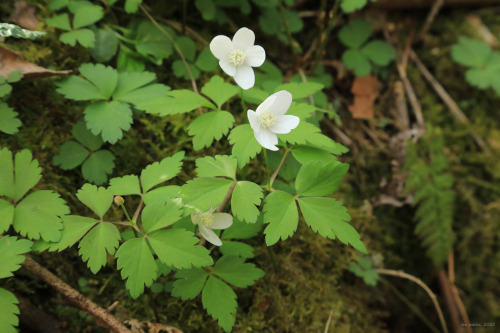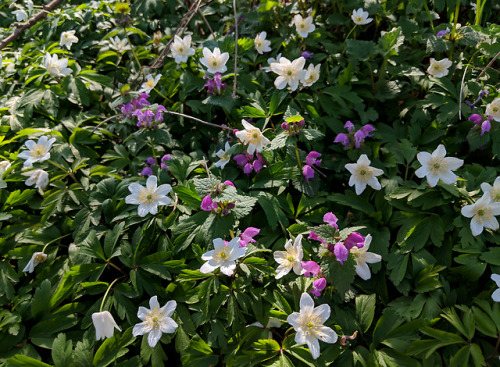#wood anemone
Two rust fungi onwood anemone (Anemone nemorosa):Ochropsora ariae (white pustules) and Tranzschelia anemones (deformed leaves and dark brown spores).
Post link
I spent a couple of hours in the woods today. So nice that spring is finally here again! The Mayday trees (they are also called bird-cherry trees) had not started blooming yet, but there were lots of wood anemones and marsh-marigold. And lots of birds, but they are unfortunately not so easy to capture on photos. I even saw a bullfinch, which I think was the first time I saw one outside of people’s gardens.
Post link

wood anemones
Anemone nemorosa (wood anemoneor thimbleweed)
Anemone ranunculoides (yellow anemoneorbuttercup anemone)
Post link
Early May in an Appalachian forest.
From top: sweet white violet (Viola blanda); long-spurred violet (Viola rostrata); broadleaf toothwort (Cardamine diphylla); wake robin (Trillium erectum), also known as red or purple trillium; heartleaf foamflower (Tiarella cordifolia); smooth Solomon’s seal (Polygonatum biflorum); and wood anemone (Anemone quinquefolia), also known as nightcaps.
Post link
Lamium purpureum, Lamiaceae & Anemone nemorosa, Ranuncolaceae
I have already written about the delicate wood anemone before, but never about the ever so common purple dead-nettle: I generally try to single plants out for photos, but couldn’t walk away from this gorgeous combination.
On the sloping side of a dry irrigation ditch, in the dappled shade of a row of tall trees, the anemone’s dissected foliage was covering the ground in a dense mat, out of which were poking the bright pink lipped flowers of the dead-nettle.
The reason why this herbaceous perennial bears that common name is due to the superficial similarity between its leaves and those of the unrelated stinging nettle (Urtica dioica), however its hairs won’t cause any harm. The top part of the plant is generally a rich burgundy-purple colour, hence the other part of the common name and the species name, but it is a variable plant and looks just green when growing in a more shady position, as in these photos.
It is often considered an undesirable plant in a garden setting, some might call it a “weed”, but I let it grow in my allotment for two main reasons. It’s in bloom from early spring often until late autumn, sometimes even longer in a sheltered position, and its flowers are loved by pollinators, especially bumblebees. Its young shoots are also edible and it’s a pot herb with an interesting flavour, so I see it as a bonus leaf vegetable.
Post link


